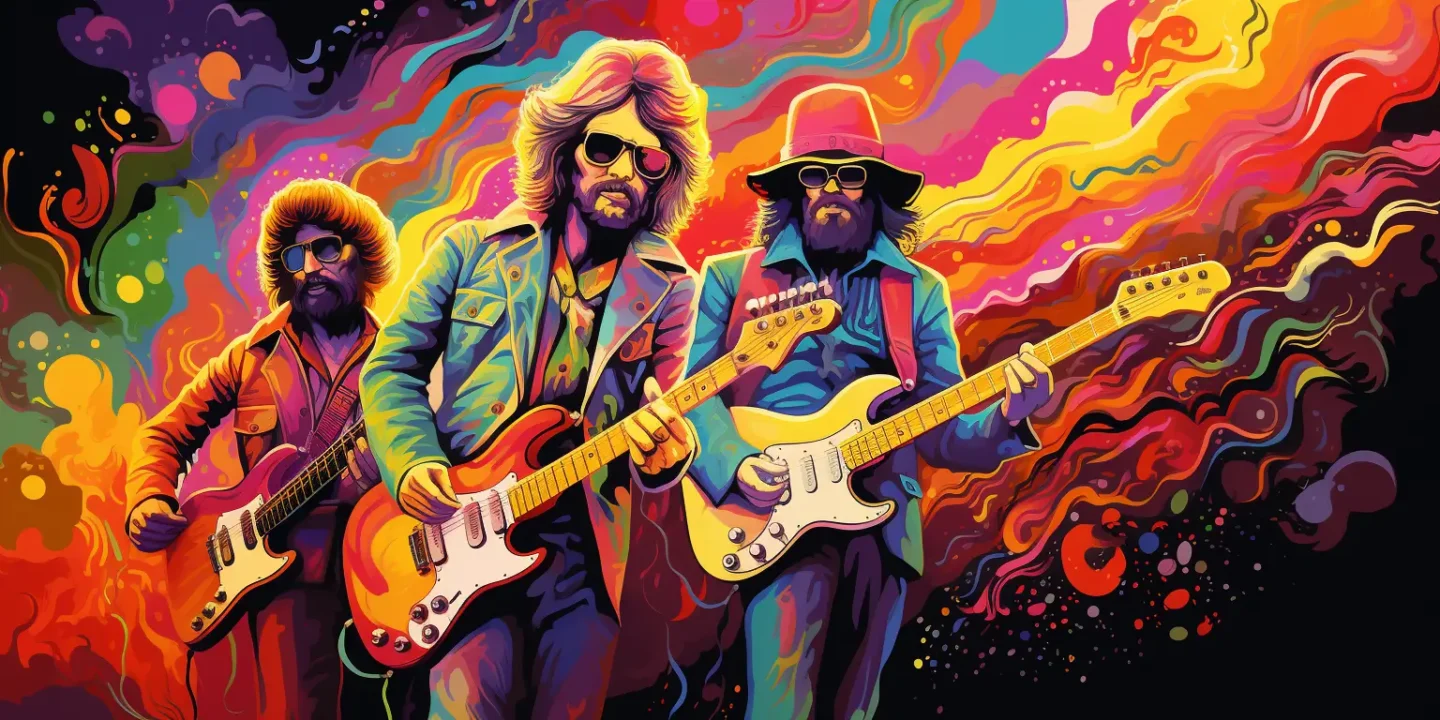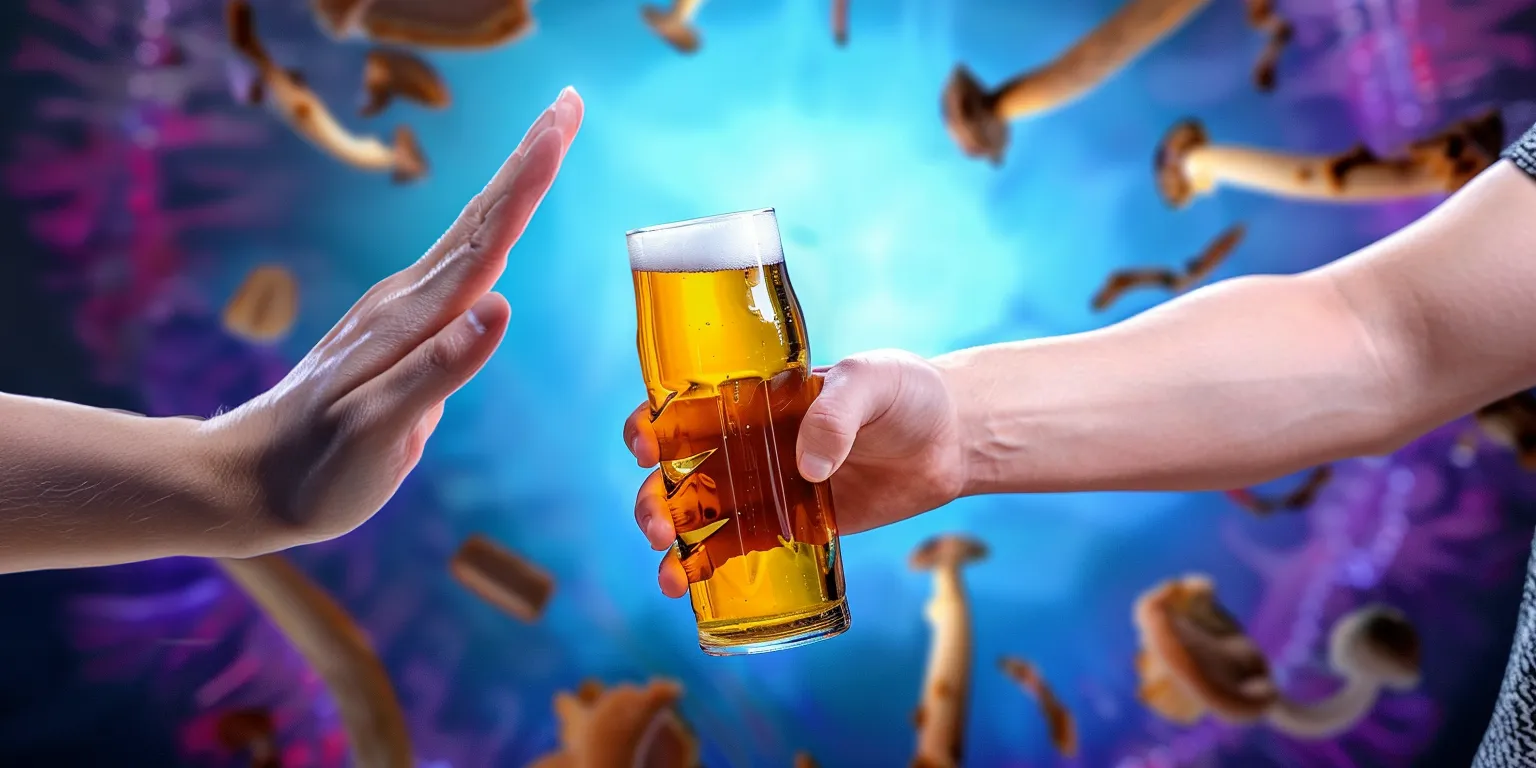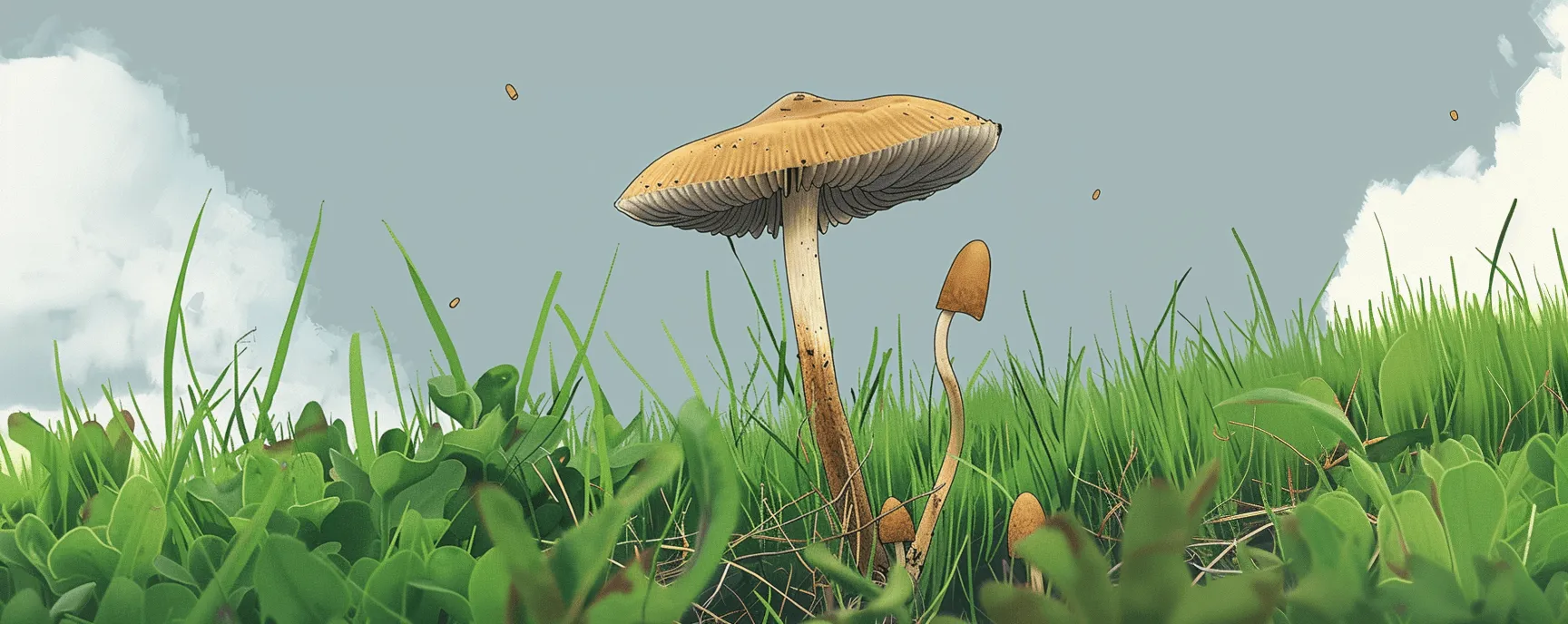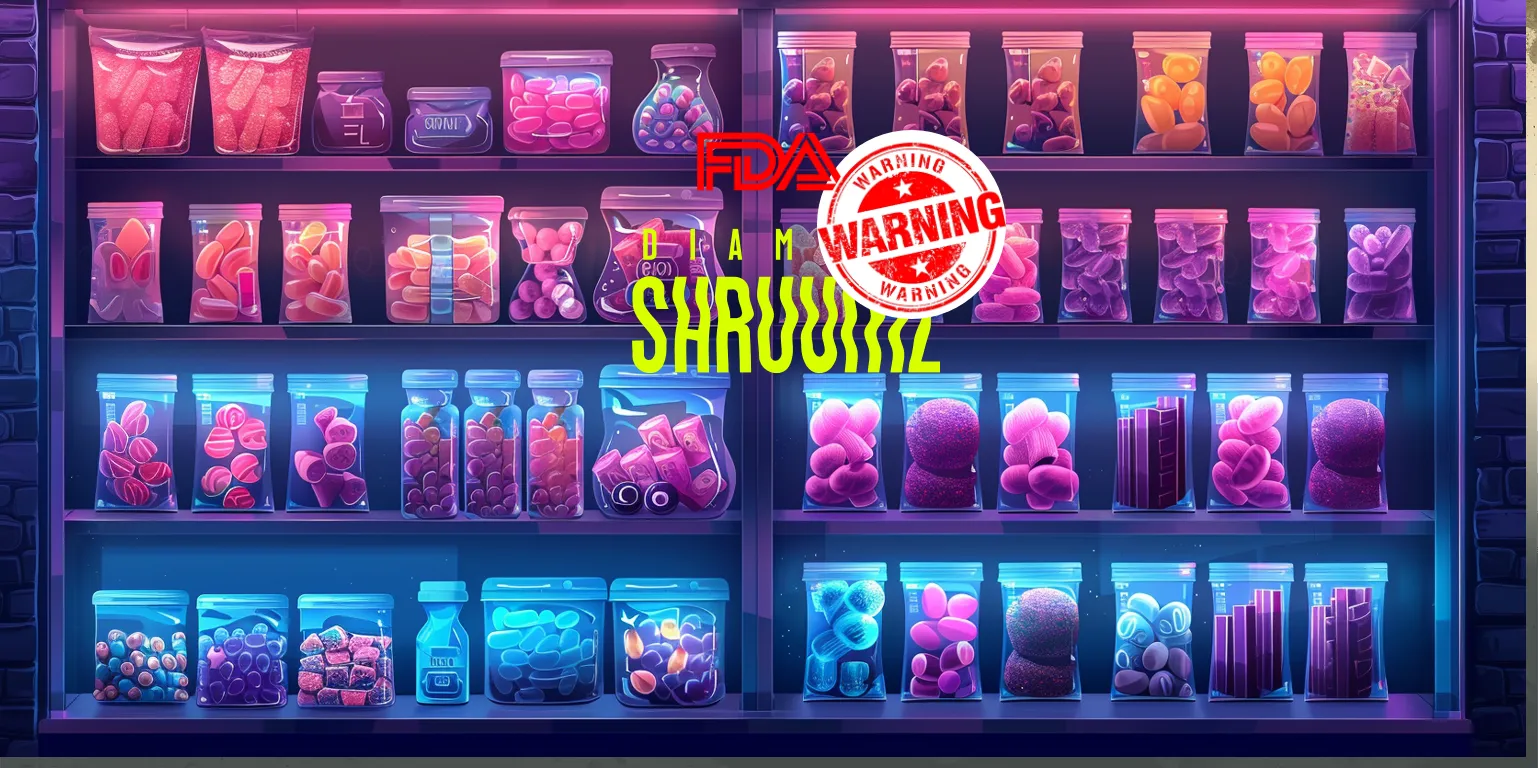Embarking on a psychedelic trip, you’ve probably put together a playlist the you know will help you navigate the vast seas of psychedelia. That playlist may include more than little psychedelic rock songs to help guide your way. You may start with a firm direction, but the next thing you know, the winds of psychedelia have blown you a little off course. Just as a sailor relies on the compass, sextant, and the stars to navigate, those venturing into the realms of psychedelics often find solace and direction in the embrace of psychedelic music. The right classic psychedelic rock song can act as your north star, a beacon illuminating the path forward, setting the mood, and profoundly influencing the overall experience.
Music, in its essence, is a powerful emotional catalyst. Combined with psychedelics’ heightened sensitivity and perceptual shifts, the right songs can evoke a spectrum of emotions, from profound euphoria to deep introspection. Multiple studies have shown that music can alter how we perceive our psychedelic experiences. From the modulation of LSD visuals to the musical tools used in psychedelic-assisted therapy, we know something as seemingly simple as a good playlist can help you have the best possible psychedelic experience.(1, 2)
A well-curated playlist can serve as a gentle hand, leading you through the peaks and valleys of your journey, ensuring that the experience remains positive, enlightening, and transformative. Moreover, the auditory landscape you immerse yourself in can act as an anchor. In moments of overwhelming sensations or when the boundaries of reality seem to blur, familiar melodies or harmonious rhythms can offer comfort and grounding. They can remind you of your intention, your surroundings, and the transient nature of the experience.
While the psychedelic voyage is inherently unpredictable, having the perfect music can be like having a trusted companion by your side. It can enhance, guide, and comfort.
As you prepare for your expedition, consider the auditory companions you want on your adventure to the inner cosmos of your psyche. With that in mind, here are our top ten picks for psychedelic songs from the classic rock genre to listen to while you explore the inner workings of your mind.
Keep Up with Uncensored Psychedelic Trends
Join our newsletter at Psychedelics Uncensored.
We respect and protect your privacy. By subscribing your info will be subject to our privacy policy . Unsubscribe easily at any time
The Best Classic Psychedelic Rock Songs
The Beatles, “Lucy In the Sky With Diamonds” (1967)
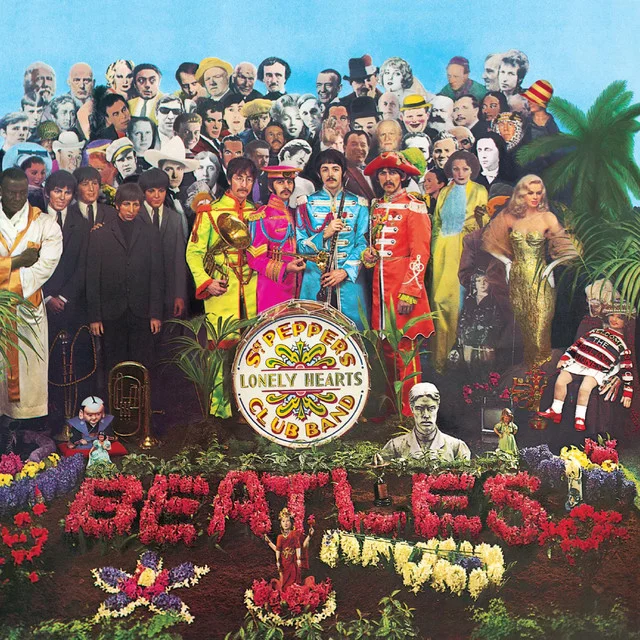
The Beatles’ Lucy in the Sky with Diamonds, from their groundbreaking 1967 album Sgt. Pepper’s Lonely Hearts Club Band, is a kaleidoscopic journey into a dreamscape of vivid imagery and surreal wonder. Often associated with the psychedelic movement, the song paints a tapestry of fantastical visions, from “tangerine trees” to “marmalade skies.” While many speculate about the song’s inspirations, which John Lennon maintains was based on a drawing from his three-year-old son Julian. Lennon says Julian drew his friend Lucy O’Donnell floating in the sky surrounded by glittering gems. No matter the origins, its true magic lies in its ability to transport listeners to a realm where imagination reigns supreme. John Lennon’s evocative vocals, paired with innovative instrumentation, create an auditory experience that is both otherworldly and deeply resonant. Lucy in the Sky with Diamonds is not just a song; it’s an invitation to explore the limitless expanse of the human imagination, making it a timeless testament to The Beatles’ artistry and the boundless possibilities for human creativity.
Jefferson Airplane, “White Rabbit” (1967)
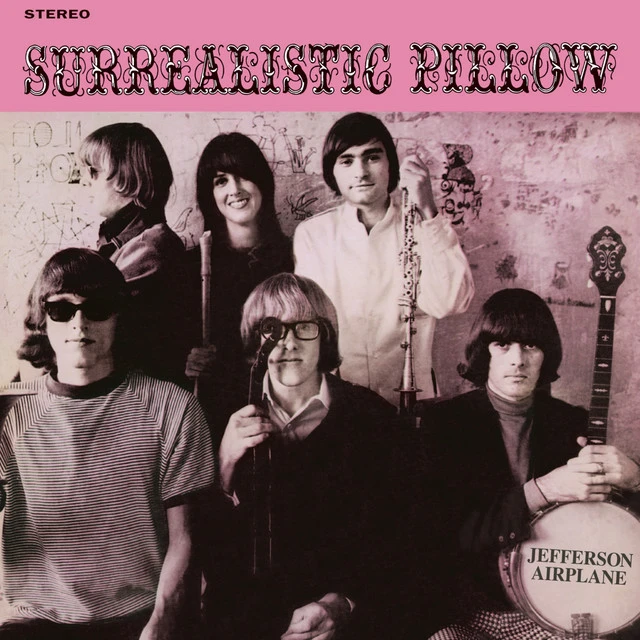
Grace Slick’s “White Rabbit” is a prime example of literary infusion into music. Drawing inspiration from Lewis Carroll’s Alice’s Adventures in Wonderland, the song is a masterful blend of whimsy and profundity. But beneath its fantastical surface lies a deeper message, a commentary on the counterculture of the time and the exploration of altered states of consciousness.
The crescendoing mantra “feed your head” isn’t just a catchy refrain; it’s a call to action, urging listeners to educate themselves, question, think freely, and challenge the status quo. In the vast landscape of psychedelic music, White Rabbit stands as a beacon, exemplifying the movement’s ability to intertwine literature, social commentary, and groundbreaking sound.
The Jimi Hendrix Experience, “Purple Haze” (1967)
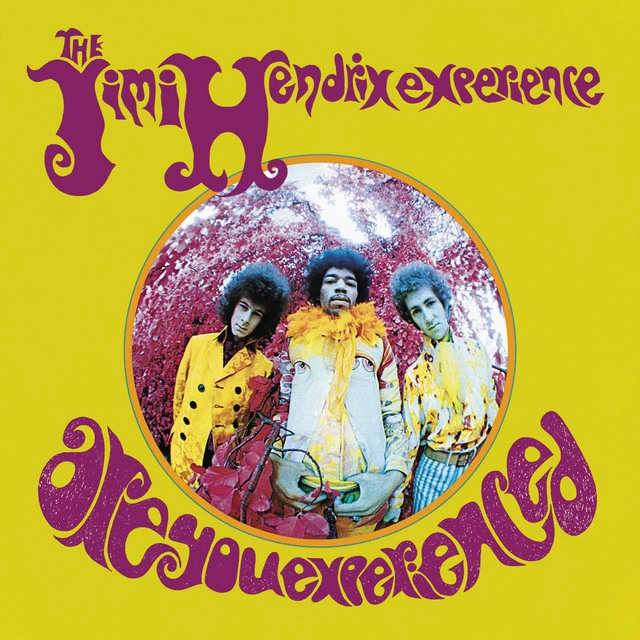
Jimi Hendrix’s Purple Haze, released as the first track of the “Are You Experienced” album, was a sonic revolution that epitomized the spirit of psychedelia and counterculture. With its intricate layers of guitar overdubs, played at varying speeds, and its avant-garde use of spoken word, this track wasn’t just music—it was an immersive experience.
Released during the burgeoning Summer of Love, Purple Haze became more than just a song: it was an anthem for a generation seeking exploration and freedom. Its experimental and psychedelic nature reflected the era’s zeitgeist and actively shaped the countercultural movement, showcasing the boundless possibilities when artists dared to transcend conventional boundaries.
The Doors, “Light My Fire” (1967)
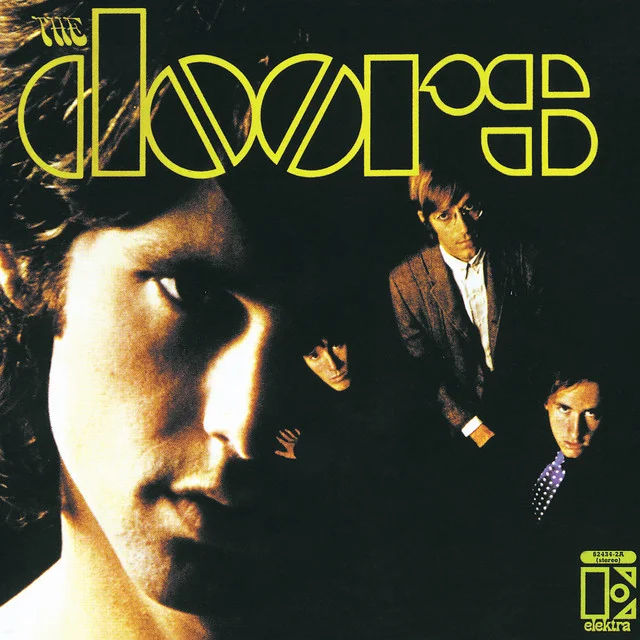
The Doors, Light My Fire, showed that psychedelia is a multifaceted movement encompassing a spectrum of emotions and themes. The Doors’ debut album, launched in January 1967, is a testament to this genre’s darker, more introspective side. While many associate the psychedelic era with vibrant colors and peace signs, The Doors delved into the shadowy recesses of the human psyche, exploring themes of existentialism, love, and the unknown. Their breakthrough hit, Light My Fire, though not as brooding as some of the album’s other offerings, played a pivotal role in popularizing the psychedelic sound. Its unique blend of catchy rhythms and evocative lyrics made it accessible to a broader audience, bridging mainstream music and the more esoteric realms of psychedelia. Through tracks like these, The Doors didn’t just participate in the psychedelic movement, they expanded its boundaries, showing that it could be both commercially successful and artistically profound.
Keep Up with Psychedelic Trends
Get uncensored psychedelic news, events, and updates. Join Psychedelics Uncensored!
We respect and protect your privacy. By subscribing your info will be subject to our privacy policy . Unsubscribe easily at any time
SteppenWolf “Born to Be Wild” (1968)
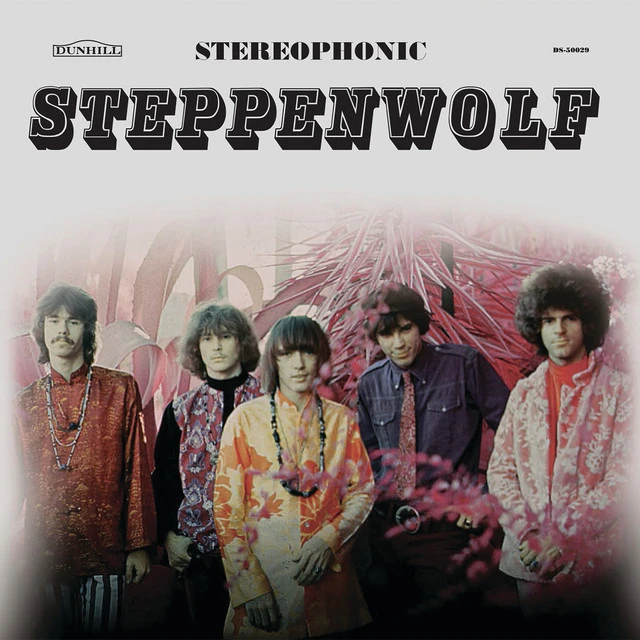
Steppenwolf’s Born to Be Wild, released in 1968, is the roaring anthem of freedom and rebellion that defined a generation. With its driving guitar riffs and powerful vocals, the song captures the spirit of the open road and the allure of unbridled adventure. Often hailed as the quintessential motorcycle anthem, its lyrics evoke images of leather-clad riders cruising down endless highways, embodying the countercultural ethos of the 1960s. The iconic line “heavy metal thunder” not only alludes to the roaring engines but also inadvertently coined a term that would define an entire genre of rock music. While Born to Be Wild is not strictly psychedelic in sound, its themes of liberation, defiance against conformity, and the pursuit of one’s own path resonate deeply with the ideals of the psychedelic movement. It stands as a timeless testament to the human spirit’s yearning for freedom and the wild call of the open road.
Grateful Dead, “That’s It For the Other One” (1968)
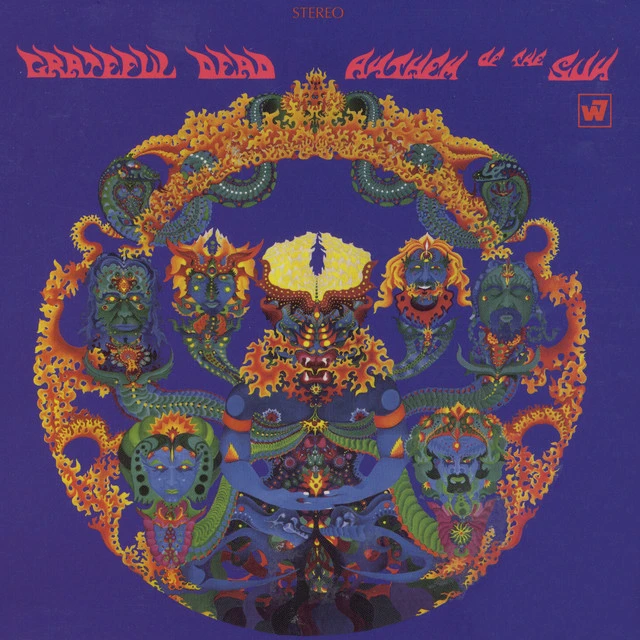
Along with Dark Star, That’s It for the Other One is a testament to the Grateful Dead’s ability to push the boundaries of musical exploration. Since its debut in 1967, it has been a cornerstone of its psychedelic live performances, taking listeners through soundscapes as unpredictable as they are mesmerizing. The 1968 studio version of Anthem of the Sun offers a different kind of magic. It’s not just a recording, it’s an experience. The way it melds various live performances with myriad studio overdubs showcases the band’s innovative approach to music creation. The avant-garde ending, a touch of genius from the briefly associated Tom Constanten, adds an unexpected twist, making the track not just a song but a sonic adventure.
Elton John, “Rocketman” (1972)
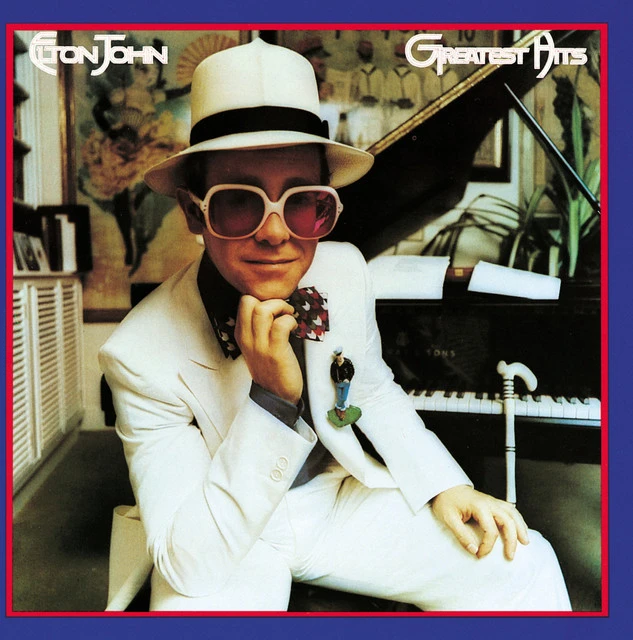
Elton John’s Rocket Man, released in 1972, is a timeless piece that transcends the boundaries of its era, blending the introspective nature of singer-songwriter ballads with the grandiosity of rock. While not strictly psychedelic, the song captures the spirit of exploration and the human yearning for the unknown, themes that resonate with the countercultural movements of the previous decade. The narrative of an astronaut torn between the allure of the cosmos and the pull of earthly connections paints a poignant picture of isolation and the sacrifices made to pursue one’s dreams. Elton John’s soulful vocals and Bernie Taupin’s evocative lyrics create an ethereal soundscape deeply grounded in human emotion. Rocket Man reflects ambition, loneliness, and the eternal quest for meaning, making it a universal anthem that continues to connect with today’s psychonauts.
Pink Floyd “Us and Them,” (1973)
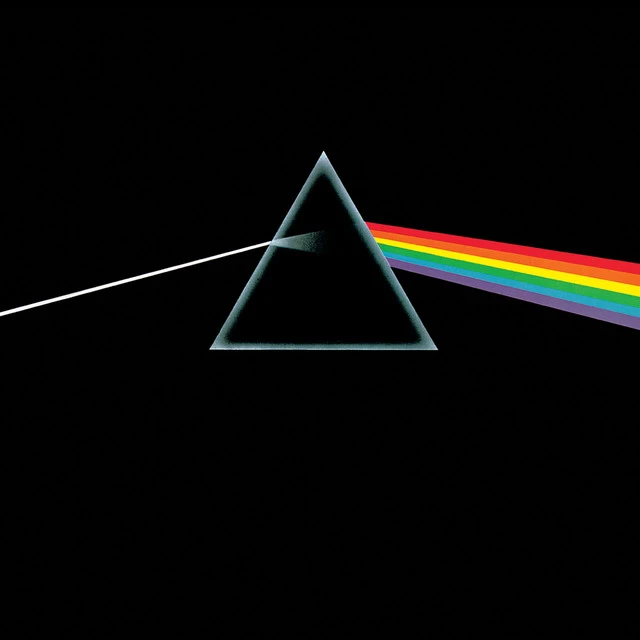
Pink Floyd’s Us and Them, from their seminal 1973 album The Dark Side of the Moon, is a haunting reflection on the human condition, exploring themes of conflict, duality, and the cyclical nature of life. The song’s mystical soundscapes, characterized by its languid saxophone solos and echoing vocals, are emblematic of the psychedelic movement’s penchant for introspection and sonic exploration. While the track delves into the stark realities of war and societal divisions, its dreamlike quality and philosophical musings are deeply rooted in the psychedelic era’s quest for understanding and connection. Us and Them offers a commentary on the world’s dichotomies, and invites listeners to transcend them, suggesting that beneath the surface, we are all interconnected in the vast tapestry of existence. The song encapsulates the very essence of the psychedelic movement, journeying inward to find universal truths.
Redbone, Come and Get Your Love (1974)
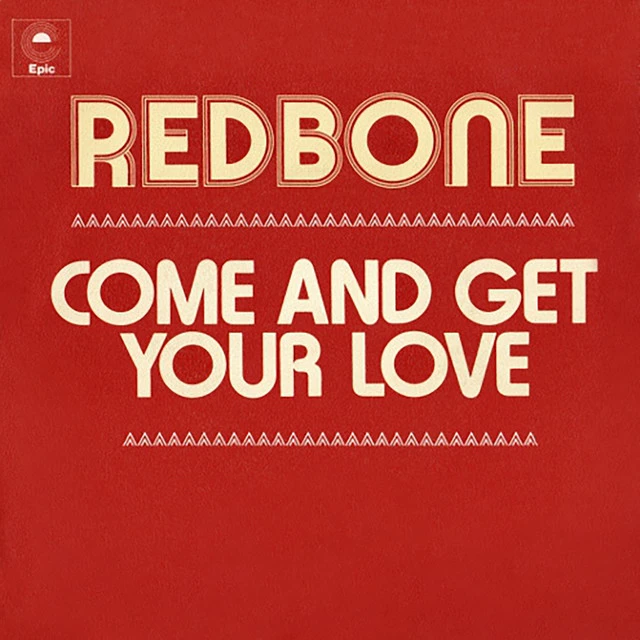
Redbone’s Come and Get Your Love, released in 1974, is a vibrant celebration of love and self-acceptance, wrapped in an infectious blend of rock and funk. The song’s upbeat rhythm and catchy chorus make it impossible not to dance along, but beneath its jubilant exterior lies a deeper message of embracing one’s identity and heritage. As one of the first Native American bands to achieve mainstream success, Redbone infused their music with cultural pride and authenticity. Come and Get Your Love stands as a testament to the universality of joy and the power of music to bridge cultural divides. Its timeless appeal, characterized by its groovy bassline and spirited vocals, ensures that it remains both a hit from the 70s and a perennial anthem of positivity and love.
Queen, Bohemian Rhapsody (1975)
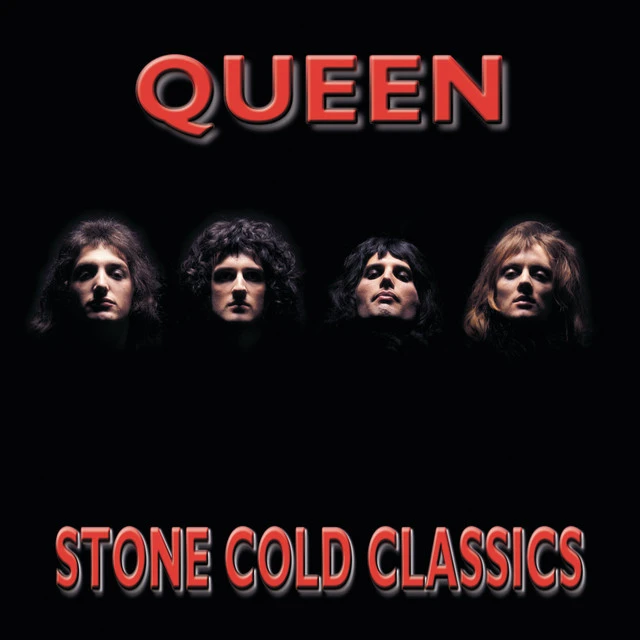
Bohemian Rhapsody, while not strictly psychedelic, embodies the experimental spirit and introspective narratives characteristic of the psychedelic era. Its genre-blending structure, dreamlike operatic section, and rich lyrical ambiguity echo the countercultural movement’s challenges to convention and exploration of consciousness. As Queen’s epic ballad progresses, it touches on themes of existentialism, regret, hope, and liberation themes. Much like a psychedelic trip, the song takes listeners on a multifaceted sonic journey, reflecting the era’s quest for self-discovery and rebellion against the ordinary. In essence, Bohemian Rhapsody is a spiritual successor to the psychedelic movement, championing experimentation and profound introspection.
From the whimsical tales of The Beatles to the introspective musings of Pink Floyd, these songs not only defined an era but also transcended time, resonating with generations of listeners. While the word “psychedelic” might conjure images of tie-dye shirts and flower power, its essence lies in exploring consciousness, the challenge of conventions, and celebrating the human spirit. These tracks, whether strictly psychedelic or merely influenced by the movement, encapsulate this central idea, inviting listeners to embark on a sonic voyage of discovery, introspection, and boundless imagination.
Whether preparing for a psychedelic journey or simply seeking a musical escape, these songs offer a gateway to a realm where the boundaries of reality blur and the wonders of the mind come to the fore. Plug in your headphones, tune out the world, and let your spirit soar to the rhythms of the universe. Safe travels, fellow psychonauts.
Sources

1. Kaelen, M., Roseman, L., Kahan, J., Santos-Ribeiro, A., Orban, C., Lorenz, R., Barrett, F. S., Bolstridge, M., Williams, T., Williams, L., Wall, M. B., Feilding, A., Muthukumaraswamy, S., Nutt, D. J., & Carhart-Harris, R. (2016). LSD modulates music-induced imagery via changes in parahippocampal connectivity. European Neuropsychopharmacology, 26(7), 1099–1109. https://doi.org/10.1016/j.euroneuro.2016.03.018
2. O’Callaghan, C., Hubik, D. J., Dwyer, J., Williams, M., & Ross, M. (2020). Experience of Music Used With Psychedelic Therapy: A Rapid Review and Implications. Journal of Music Therapy, 57(3), 282–314. https://doi.org/10.1093/jmt/thaa006
This material is not intended as a replacement or substitute for any legal or medical advice. Always consult a medical professional about your health needs. Psychedelics are widely illegal in the United States, and readers should always be informed about local, state, and federal regulations regarding psychedelics or other drugs.
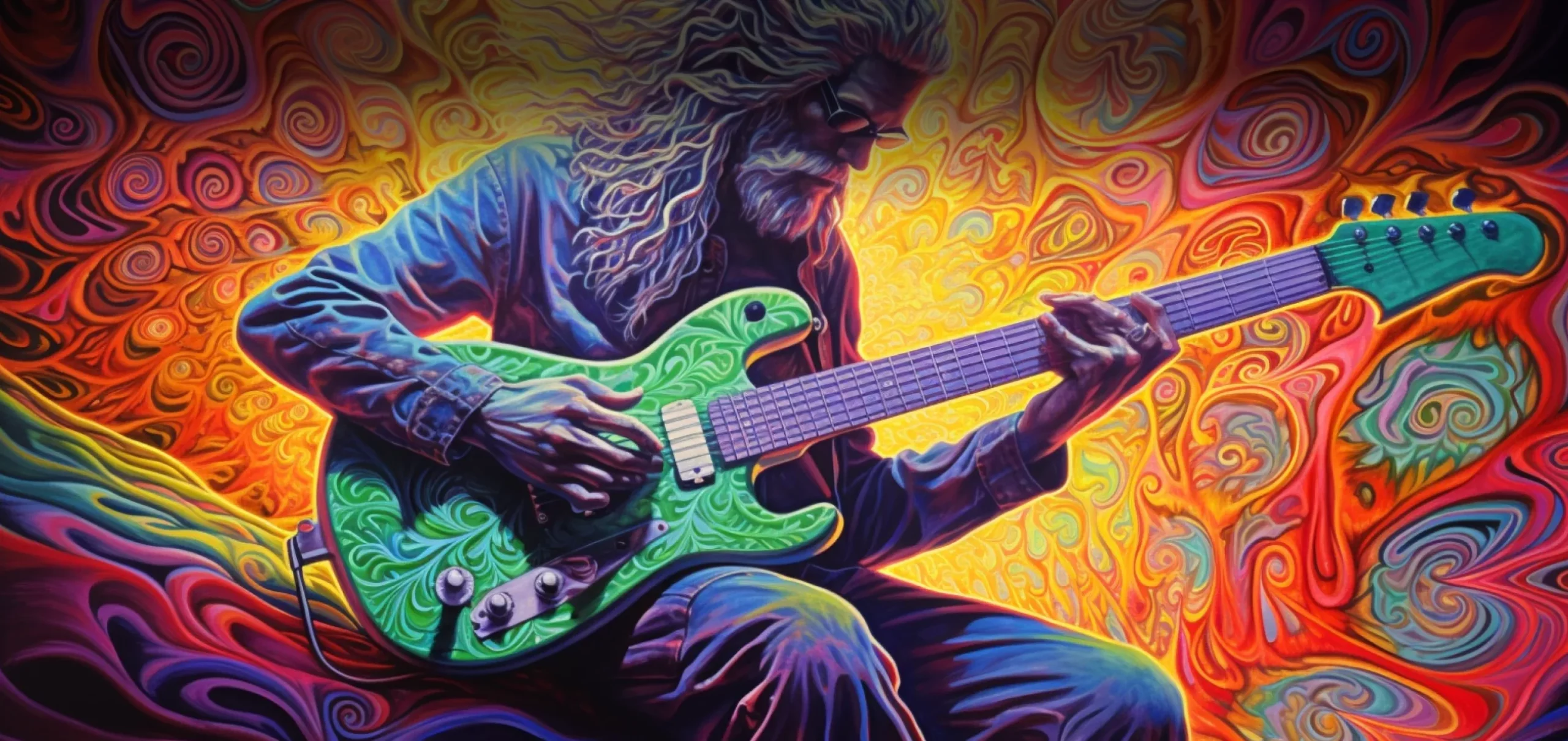
 David Connell
David Connell